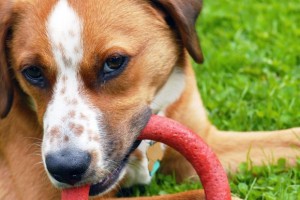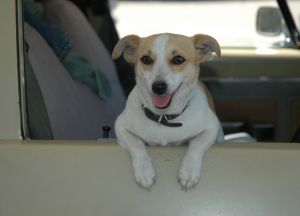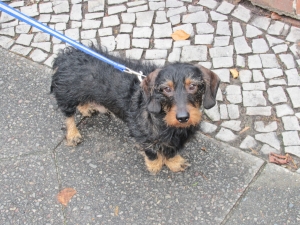 Toys are a great way for dogs to burn off energy and socialize. But they can be counterproductive if your dog doesn’t know how to play nice with others. If your dog demonstrates the signs of toy aggression, you as an owner must learn how to stop this behavior before it explodes into something far more dangerous.
Toys are a great way for dogs to burn off energy and socialize. But they can be counterproductive if your dog doesn’t know how to play nice with others. If your dog demonstrates the signs of toy aggression, you as an owner must learn how to stop this behavior before it explodes into something far more dangerous.
What are the signs of toy aggression?
Baring teeth and growling whenever you or another animal approaches a toy is certainly an obvious sign that your dog is aggressive with his toys. But there are other signs as well you must look out for, including:
-
Does your dog stand over his toys often (to protect them)?
-
Does he take his toys to a hiding place (like under a table)
-
Does he snap at you when you try to take his toy away?
These are all signs of toy aggression and possessiveness. Possessiveness is a normal trait that’s helpful if the possession involved has to do with a dog’s ability to survive in the wild. However, as your dog is perfectly safe and content in his home, this possessive trait is not only unhelpful, but is potentially dangerous.
What can I do to fix this aggression?
There are a lot of potentials you can put into place to help your dog get rid of his toy-aggression ways. If you’re dealing with this behavior in its most earliest forms, then you can still incorporate the “drop it” command (alongside the “take it” command).
With this training method, keep your dog leashed so he can’t trot off with the toy. Sit beside your dog, and offer him the toy by saying “take it,”, while holding on to the other end with your hand (this is like two dogs sharing a toy). Then, after a few seconds (no more than 20 seconds) calmly say “drop it” and lean your body toward your dog. Be sure not to lean over the dog (that’s too aggressive). Just lean toward him to interrupt his space slightly. It might not happen right way, but eventually the dog should drop the toy, as your subtle body movement encourages him to do so. If he doesn’t drop the toy on his own, slightly twist it out of his mouth.
Once your dog is calm (and not actively reaching for the toy again), repeat the exercise. As your dog begins to master this skill, increase the amount of time he’s allowed to play with the toy before you say “drop it.” If you and your dog do well, you should be able to walk by your dog and say “drop it,” and he’ll abide.
Even when your dog masters this exercise with a toy, he’s still no master. Now you have to use different (and more enticing) toys, like a meaty bone. Don’t move on to this more challenging task until your dog is an absolute wiz at “drop it” with his less rewarding toy.
What if my dog is already extremely aggressive?
If your dog is already in a red-zone area, then this type of training likely won’t be effective. You need the assistance of a specialized trainer who has the patience, knowledge, and confidence to help your dog overcome this behavior.
But there are things you can do on your own. Make sure all treats and toys are out of the reach of your dog. Only give your dog these toys when he’s extremely calm and, ideally, when he’s in a safe place, such as a crate. As a side benefit, he may learn to love his crate if that’s the only time he gets his cherished toys. When he’s done with the toy (and out of his safe area) take away the toy. Obviously it’s best to do so if your dog isn’t around, so not to encourage an act out.
But giving your dog his toys in his crate is only masking the problem. It’s not solving it. If your dog is already extremely aggressive with toys or objects, you must seek the guidance of a trainer who can not only help you come up with band-aid approaches in the interim, but a long-term solution so that your dog and family can live harmoniously without fear of a disaster just around the corner.





